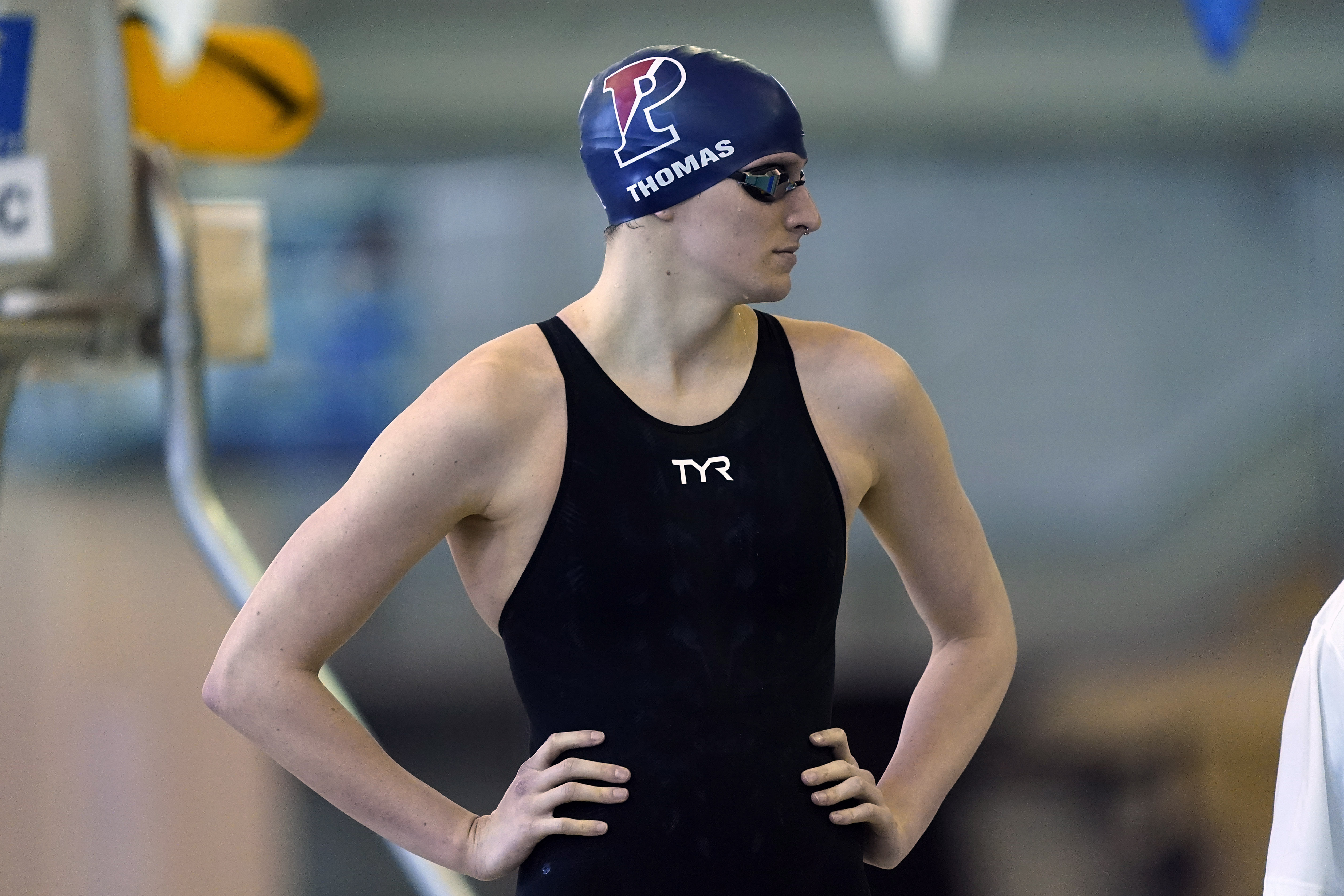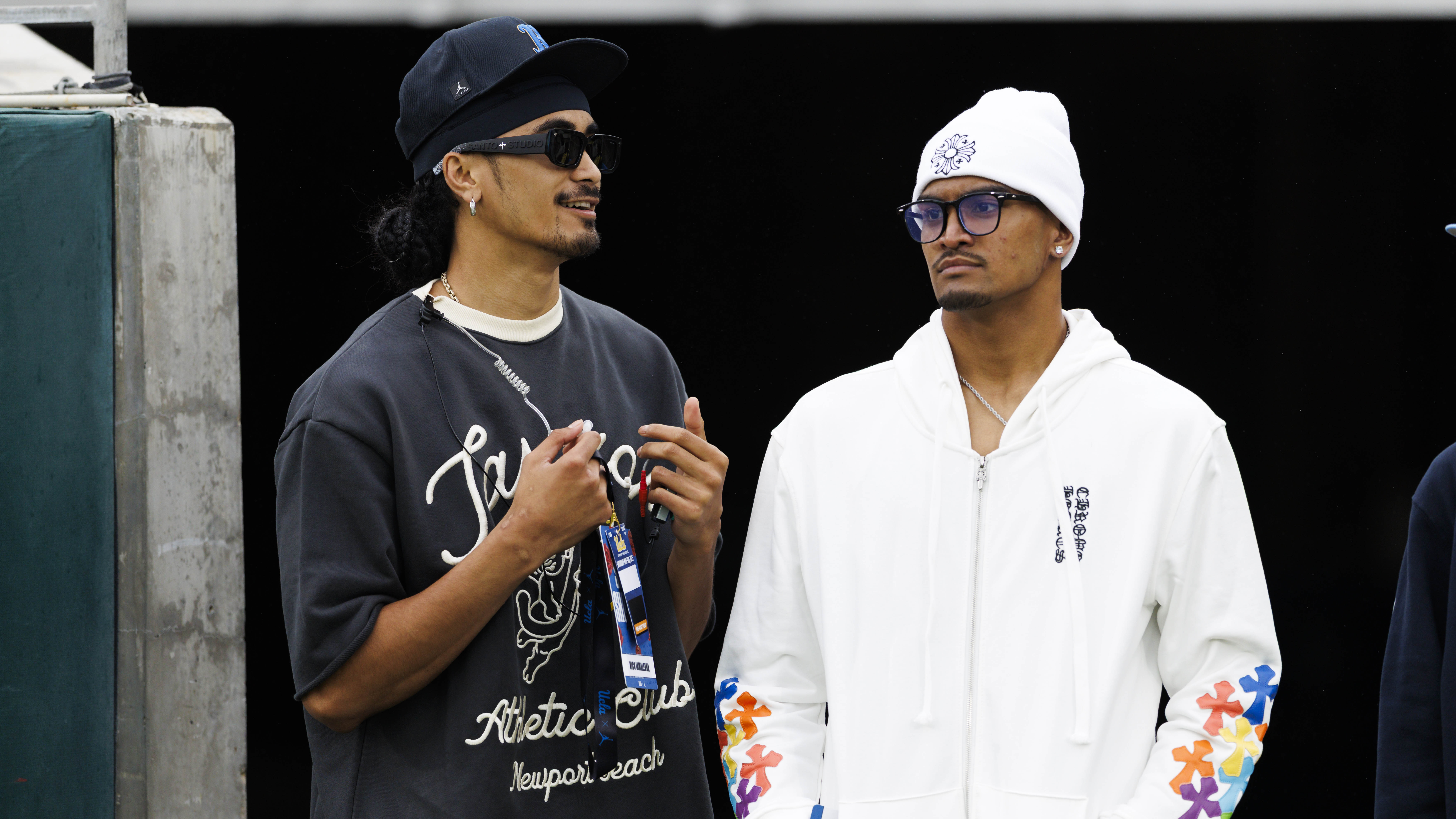Penn Trans Swimmer Case: Sex Discrimination Accusations!
Penn Under Fire: Sex Discrimination Claims in Trans Swimmer Controversy
Introduction: A Tempest in the Pool?
The waters are turbulent, and not just in the pool. The University of Pennsylvania (Penn) finds itself at the center of a heated debate, accused of violating sex discrimination laws. What's causing the splash? A transgender swimmer, Lia Thomas, who competed on the school's women's team. Now, the Trump administration is wading into the fray, arguing that Penn's actions illegally denied women equal opportunities. This isn't just about swimming; it's about fairness, inclusion, and the very definition of "woman" in sports. So, let's dive deep and explore all the angles.
The Allegations: Unequal Opportunity?
The heart of the matter lies in the claim that allowing Lia Thomas to compete on the women's team disadvantaged other female athletes. The Trump administration, in a statement that doesn't explicitly name Thomas but clearly alludes to her case, suggests that Penn's policies compromised equal opportunity for cisgender female swimmers. The accusation is serious: that Penn prioritized inclusivity at the expense of fairness. Was there a level playing field, or were some swimmers swimming upstream against an unfair current?
The Specifics: Access and Awards
The complaint isn't just about competition; it extends to access and recognition. The Department of Education, which investigated the matter, allegedly wants Penn to take significant action. What kind of action? Stripping Thomas of any awards she may have received while competing on the women’s team and issuing an apology to the female swimmers who may have been affected. It's a demand that carries considerable weight, suggesting a desire to right what the administration perceives as a significant wrong. Imagine being asked to give back your hard-earned trophies and say you're sorry – that's the potential outcome for Penn.
Penn's Defense: Following the Rules
Penn, however, isn't backing down without a fight. While they haven’t issued a specific statement regarding the latest developments, they've maintained that they've consistently adhered to the policies set forth by the NCAA (National Collegiate Athletic Association) and the Ivy League. This is a crucial point. If Penn followed the established rules, does that absolve them of responsibility, or does it highlight potential flaws within those very guidelines? Think of it as a game: did Penn break the rules, or were the rules themselves problematic?
The NCAA and Ivy League Policies: A Shifting Landscape
The NCAA and Ivy League policies regarding transgender athletes have been evolving. Initially, the focus was on hormone therapy, requiring transgender women to undergo a certain period of testosterone suppression before competing on women's teams. However, these policies have been subject to ongoing review and revision, reflecting the complexities and sensitivities surrounding the issue. It's like trying to navigate a maze that keeps changing its walls. What was acceptable yesterday might not be acceptable today.
Current NCAA Policy
As of 2022, the NCAA updated its policy to align more closely with the US Olympic and Paralympic Committee's (USOPC) guidelines. This involves a sport-by-sport approach, deferring to the policies of each sport's national governing body. The question is, how effective are these sport-specific policies in ensuring fairness and inclusivity simultaneously?
Lia Thomas: A Symbol and a Target
Lia Thomas became a lightning rod in the debate surrounding transgender athletes. Her success in the pool, after transitioning and competing on the women's team, sparked both admiration and outrage. She became a symbol of transgender inclusion for some, while others viewed her as a threat to the integrity of women's sports. Whether you see her as a pioneer or a disruptor, her presence undeniably changed the landscape of collegiate swimming.
The Broader Debate: Fairness vs. Inclusion
At its core, this controversy highlights the inherent tension between fairness and inclusion in sports. How do we create a welcoming environment for transgender athletes while ensuring that cisgender female athletes have a fair opportunity to compete and succeed? It's a question with no easy answers. It's like trying to balance two opposing forces on a seesaw – finding that perfect equilibrium is incredibly challenging.
The Argument for Fairness
Those who advocate for fairness argue that biological differences between males and females give transgender women an inherent advantage, even after hormone therapy. They point to differences in bone density, muscle mass, and cardiovascular capacity as factors that contribute to this advantage. They argue that allowing transgender women to compete without addressing these biological differences compromises the integrity of women's sports. Imagine running a race with someone who has a head start – that's how some perceive the situation.
The Argument for Inclusion
On the other hand, proponents of inclusion argue that excluding transgender athletes is discriminatory and harmful. They emphasize the importance of creating a welcoming and supportive environment for transgender individuals, allowing them to participate fully in all aspects of society, including sports. They also point to the fact that not all transgender women are athletically superior to all cisgender women. Think of it as building a bigger table instead of a higher fence – making space for everyone.
The Legal Landscape: Title IX and Sex Discrimination
The legal basis for the Trump administration's claim rests on Title IX, a federal law that prohibits sex discrimination in education programs and activities that receive federal funding. The interpretation of Title IX, however, has been a subject of ongoing debate. Does "sex" encompass gender identity? Different administrations have taken different stances on this issue, leading to a complex and ever-evolving legal landscape. It's like trying to navigate a legal minefield – one wrong step could trigger significant consequences.
The Biden Administration's Stance
It’s important to note that the Biden administration has taken a different approach, generally supporting the inclusion of transgender athletes. This contrast highlights the political nature of the issue and the potential for policy shifts depending on the prevailing political climate.
Potential Ramifications: Beyond the Pool
The outcome of this case could have far-reaching ramifications, extending beyond the realm of collegiate swimming. It could set a precedent for how schools and sports organizations handle transgender athletes, influencing policies at all levels of competition. Think of it as a domino effect – one decision could trigger a chain reaction across the entire sporting world.
Public Opinion: A Divided Nation
Public opinion on transgender athletes is deeply divided. Some people are strongly supportive of inclusion, while others believe that it compromises fairness. This division reflects broader societal debates about gender identity and equality. It's like two sides of a coin, each with a valid perspective.
The Future of Transgender Athletes in Sports: Navigating Uncertain Waters
The future of transgender athletes in sports remains uncertain. As science advances and societal attitudes evolve, policies and regulations will likely continue to change. Finding a balance between fairness, inclusion, and respect for all athletes is the ultimate goal. It's a long journey, and we're all learning as we go. The key is to keep the conversation going, listen to different perspectives, and strive for solutions that are both equitable and compassionate.
Conclusion: Finding a Path Forward
The controversy surrounding Penn and Lia Thomas underscores the complex challenges of navigating transgender inclusion in sports. The Trump administration's allegations of sex discrimination highlight the tension between fairness and inclusion, a debate that is likely to continue for years to come. The outcome of this case could have far-reaching implications, shaping policies and attitudes towards transgender athletes at all levels of competition. Ultimately, finding a path forward requires open dialogue, empathy, and a commitment to creating a sporting world that is both fair and inclusive for all. It’s a difficult problem, but one we must grapple with thoughtfully and respectfully.
Frequently Asked Questions
- Q: What is Title IX, and how does it relate to this case?
A: Title IX is a federal law that prohibits sex discrimination in education programs and activities that receive federal funding. The argument is whether "sex" includes gender identity, influencing if Penn violated Title IX by allowing Lia Thomas to compete. - Q: What specific actions is the Department of Education allegedly seeking from Penn?
A: The Department of Education is reportedly seeking for Penn to strip Lia Thomas of any awards she received while competing on the women’s team and issue an apology to the female swimmers who may have been affected. - Q: What is Penn's defense in response to the allegations?
A: Penn has maintained that it has consistently followed the policies set forth by the NCAA and the Ivy League regarding transgender athletes. - Q: How have NCAA policies regarding transgender athletes evolved over time?
A: Initially focused on hormone therapy, NCAA policies have evolved to align more closely with the USOPC guidelines, taking a sport-by-sport approach and deferring to national governing bodies' policies. - Q: What are the key arguments in the debate between fairness and inclusion in sports for transgender athletes?
A: Proponents of fairness emphasize potential biological advantages, while proponents of inclusion highlight the importance of creating a welcoming environment for transgender individuals.

